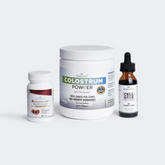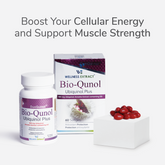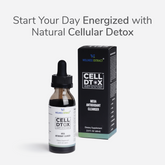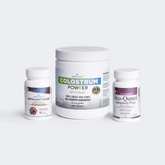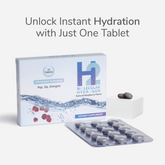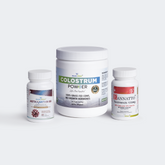Estimated Reading Time: 5 minutes
|Have you heard of coffee enema? Well, coffee enemas are becoming a popular wellness trend. It's great for people looking to support gut health, detoxify naturally, and even have better skin.
Did you know that coffee enemas have been used in health practices for centuries. And modern enthusiasts now turn to high-quality, organic coffee as a gentle and potentially beneficial way to cleanse the colon.
For women, one common question is: “Is it safe to do a coffee enema before or during your period?” Hormonal changes and other body changes during menstruation can make detox routines feel a bit awkward. So, it’s important to understand the benefits, risks, and detox best practices.
In this blog, we’ll talk about coffee enemas, explain how they work and safety tips for women around their menstrual cycle. Expecting that by the end, you’ll have a clear, balanced understanding to decide if this wellness practice fits your routine or not.
History & Ayurvedic Enema PracticesEnemas have been used for thousands of years across different cultures to support gut health, detoxification, and overall wellness. 1. Ayurveda (India, 1000+ years ago): Known as Basti, enemas are part of Panchakarma detox therapies.
2. Ancient Civilizations: Egyptians (1550 BC), Greeks, and Romans used enemas to relieve constipation, cleanse the intestines, and treat digestive issues. 3. Medieval Europe: Enemas became common for addressing infections and serious illnesses, including attempts to combat epidemics like the Black Death. |
What are the Types of Enema?
There are two types of enemas in Ayurveda: Sneha basti (retention enemas) & Niruha Basti (Cleansing Enemas)
-
Niruha Basti:
These are water-based, consisting of a decoction of medicinal herbs, usually with additives like honey and salt. This is flushed out of the body shortly after application.
The most common cleansing enema includes the following:
-
Water
-
Lemon juice
-
Sodium phosphate
-
Sneha Basti:
In this retention enema, as the name suggests, the fluid used is retained for an extended duration, for at least 15 minutes before flushing it out.
Most commonly, retention enema uses the following
-
Medicated oil
-
Ghee/ clarified butter
-
Coffee

The Surge of Coffee Enema and its Potential Benefits
Coffee enemas have recently gained popularity in modern wellness circles. They offer unique approach to support gut and liver health. First introduced by physician Dr. Max Gerson in the 1950s, coffee enemas involve introducing room-temperature coffee into the colon to promote detoxification.
But Why Coffee?
Supporters of coffee enema say that certain components/chemicals that are naturally present in coffee beans, such as kahweol palmitate and cafestol palmitate, may support the body in ways similar to traditional enemas, such as:
-
Supports liver function by stimulating bile flow
-
Provides antioxidants that help reduce inflammation
-
May improve circulation and tissue repair
Besides, there are benefits that people also report including:
-
Promotes regular bowel movements and digestion
-
Supports skin heath by potentially boosting glutathione, a key antioxidant
-
Helps maintain overall vitality
Note: Coffee enemas should be used thoughtfully and safely. Always follow proper hygiene, dosage, and consult a healthcare provider if you have medical concerns.
Read More: How Does a Coffee Enema Work?
Only for YOU!! Quick byte:
Glutathione is not just an antioxidant. It inhibits Neoplasia, i.e., uncontrolled growth of abnormal tissue.
The caution you need to take: While everyone aspires to good skin, it’s essential to remember not to overdo it without the guidance of a healthcare professional.
Should You Do a Coffee Enema Before Your Period?
During menstruation, your body goes through natural hormonal and physical changes. The pelvic region becomes more sensitive, and sometimes women have painful cramps. While it may have potential detox benefits, performing coffee enema before or during period may increase certain risk factors.
Key Risks to Be Aware of
-
Susceptible to Infection
During this time, the vaginal and pelvic region can be more sensitive. Menstrual blood creates a favorable environment for bacteria, thus, inserting a device, even with proper care, may increase the risk of infection.
-
Electrolyte Imbalance & Dehydration
During periods, fluid shifts are already happening in the body. Doing an enema can potentially lead to dehydration and electrolyte imbalance, leaving you more fatigued.
-
Increased Anxiety or Sensitivity
Coffee contains caffeine, which can overstimulate some women. Especially those who are sensitive to caffeine, may get anxious. Many already experience mood swings, cramps, or anxiety during periods. A coffee enema could add to discomfort.
Also Read: Are Coffee Enemas Good For You?
The Bottom Line
Coffee enemas have a long history, from ancient cleansing rituals to modern wellness trends. The traditional text has advocated the use of enemas and, but more research & case studies are required from the scientific fraternity on using coffee enemas for their potential health benefits.
Additionally, not much information is available on whether to use it or not during periods. So, if you’re curious about trying a coffee enema, avoid scheduling it right before or during menstruation. Also, before including any new regimen in your routine, you should first educate yourself about the risks and benefits of the procedure from experts.
Disclaimer: The above-given content is for informational use only. More extensive research is required to confirm the above and there is no sufficient data to support it. These statements are not FDA-approved. Do your own research and get professional help before coming to a conclusion.
Frequently Asked Questions
Q1: Is it safe to do a coffee enema before or during my period?
It’s generally not recommended. Menstrual changes can increase sensitivity, infection risk, and electrolyte imbalances. If you want to try a coffee enema, schedule it outside your period.
Q2: How often can I safely use a coffee enema?
Use coffee enemas sparingly. Most experts suggest once a week or less, depending on your health and tolerance. Overuse may lead to irritation, dehydration, or electrolyte imbalance.
Q3: Which type of coffee is best for enemas?
Use organic, light-to-medium roast coffee, brewed and cooled to body temperature. Avoid hot coffee to prevent burns and irritation.
References:
-
Ayurveda Bansko. "Lekarstveni Klismi Ayurveda." Ayurveda Bansko, https://www.ayurvedabansko.com/lekarstveni-klismi-ayurveda/#:~:text=In%20medieval%20Europe%2C%20enemas%20were,of%20detoxification%20and%20purification%20procedures.
-
TheraStore. "3 Main Benefits of Coffee Enemas (Plus 1 Instructional Guide)." TheraStore, https://therastore.co/blogs/articles/3-main-benefits-of-coffee-enemas-plus-1-instructional-guide?srsltid=AfmBOory7Il7X8ELBRARtaWHoubKW7rAKWGnYs1HS5CNROpM9P5gQg-e
-
Healthline. "Coffee Enema: Benefits, Risks, and More." Healthline, https://www.healthline.com/health/coffee-enema








![Top 5 Best Vitamins for Men in Their 30s [Backed by Science!]](http://wellnessextract.com/cdn/shop/articles/Vitamin_for_men_8fe0fe21-19b1-4020-b895-dc104449637e_165x.webp?v=1765878148)











